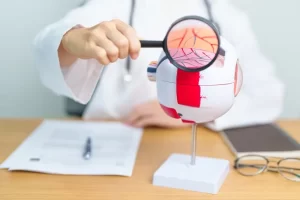
Introduction
Ear infections result from a viral or bacterial infection that affects the middle ear, the area of the Ear just behind the eardrum. Ear infections can be painful due to inflammation of the middle Ear and accumulation of fluid.
Ear infections can be chronic or acute. Acute infection is painful but short-lived.
Chronic ear infection does not go away or occur many times. Chronic otitis media can cause permanent damage to the middle and inner Ear.
Symptoms
- Mild ear pain and discomfort
- Persistent pressure in the ears
- Irritability in young infants
- Pus-like drainage from the ears
- Deafness
These symptoms may persist or go and come. Signs can occur in one or both ears. Pain is usually exacerbated by infections in both ears (infections in both ears). Symptoms of chronic infection may be less noticeable than those of acute.
Children under six months with symptoms of fever and ear infections should see a doctor. Consult an ENT specialist in Karachi if your child has a fever above 39 ° C (102 ° F) or has severe ear pain.
Causes
Ear infections appear when one of the Eustachian tubes becomes swollen or clogged, and the middle Ear becomes hydrated. The Eustachian tube is a small tube that extends directly from each Ear to the back of the throat.
The causes of Eustachian tube hindrance are:
- Cold
- Allergy
- Smoking
- Sinus infection
- Excess mucus
- Infected or inflamed adenoids (tissues near the tonsils that trap harmful bacteria and viruses)
- Alteration in air pressure
Diagnosis
Healthcare providers examine their ears with an instrument called an otoscope equipped with lights and magnifying glass. The test may reveal:
- Liquid filled with redness, air bubbles, or pus in the middle ear
- Fluid coming from the Middle Ear
- Perforation of the eardrum
- Swelling or collapse of the eardrum
If the infection progresses, doctors may take a sample of the fluid in the Ear and test for certain types of antibiotic-resistant bacteria. Doctors can also order a computed tomography (CT) scan of your head to determine if the infection has spread beyond your middle Ear. Finally, a hearing test may be needed, especially if you have a chronic ear infection.
Treatment
Most mild ear infections go away without intervention. Some of the following methods are effective in relieving the symptoms of mild ear infections.
- Apply a warm washcloth to the affected ear
Medications:
- Take over-the-counter (OTC) painkillers such as ibuprofen and acetaminophen.
- Use over-the-counter ear drops or prescription ear drops to relieve pain.
- Take over-the-counter decongestants such as Pseudoephedrine.
- Talk to your doctor if your symptoms worsen or do not improve. You can also consult.
- If the ear infection is chronic or not improved, antibiotics can be prescribed.
- If a child under the age of 2 has symptoms of an ear infection, the doctor will probably also give antibiotics.
- It is essential to complete the entire course of prescribed antibiotics.
Surgery:
Surgery may be an option if the ear infections do not go away with conventional treatments or if there are many ear infections in a short period. In most cases, a tube is placed in the Ear to allow the liquid to drain.
Surgical removal of the adenoid may be required if an enlarged adenoid is involved.
Some serious complications
If the condition is left untreated for the long term, it may cause serious complications such as:
- Deafness
- Child speech or language delay
- Mastoiditis ( mastoid infection-bone of the skull)
- Meningitis (Membrane’s bacterial infection-membrane that lines the brain and spinal cord)
- Cracked eardrum
Preventive Measures
You can reduce the risk of ear infections in the following ways:
- Wash your hands regularly
- Avoid crowded areas
- Give up pacifiers with babies and toddlers
- Breastfeeding baby
- Avoid indirect smoking
- Keep vaccinations up to date
Risk factors:
Ear infections are most common in young children because the Eustachian tubes are short and thin. Baby bottle-fed babies have a higher incidence of ear infections than breastfed babies.
Other factors that increase your risk of developing ear infections are:
- Change height
- Climate change
- Exposure to cigarette smoke
- Use of a pacifier
- Recent illness or ear infection
Who to consult?
If you or your family members are experiencing any of the symptoms discussed above, you should consult an ear specialist. The condition should not be avoided, as it may cause serious complications, even the complete loss of hearing.
FAQs:
What other condition can cause Ear pain?
- Sore throat
- Teeth appear in the baby.
- Tooth infection
- Buildup of earwax
- The altitude of pressure alteration
Can Ear be affected by COVID-19?
According to research, tinnitus or hearing loss are not usual symptoms of COVID-19.
Are Ear Infections Painful to Touch?
Outer ear infections are often excruciating, especially when touching or pulling on the earlobe. Itching is also common.
Can Ear Infections Cause Cough?
When your child has an ear infection, it usually starts with a cold. They probably have a cough, congestion, and runny nose.







